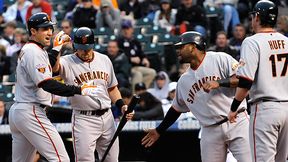- 4,325
- 10
- Joined
- Sep 12, 2007
One of my good friends is playing for the Shorebirds and he played against Harper this week. I'll hit him up tomorrow to get his impressions.
Follow along with the video below to see how to install our site as a web app on your home screen.

Note: this_feature_currently_requires_accessing_site_using_safari
MINNEAPOLIS -- Hall of Famer Harmon Killebrew says he will no longer fight esophageal cancer and is settling in for the final days of his life.
The Minnesota Twins released a statement on Friday from Killebrew, who was diagnosed with the disease in December.
“
It is with profound sadness that I share with you that my continued battle with esophageal cancer is coming to an end.
MINNEAPOLIS -- Hall of Famer Harmon Killebrew says he will no longer fight esophageal cancer and is settling in for the final days of his life.
The Minnesota Twins released a statement on Friday from Killebrew, who was diagnosed with the disease in December.
“
It is with profound sadness that I share with you that my continued battle with esophageal cancer is coming to an end.


Originally Posted by Osh Kosh Bosh
Jose Bautista has a .969 OPS this year . . . WITH TWO STRIKES.
Originally Posted by Osh Kosh Bosh
Jose Bautista has a .969 OPS this year . . . WITH TWO STRIKES.
Originally Posted by CP1708
That's a pretty damn good fight there. Surprised it only lasted a minute. I saw some kicks, couple good punches, make that swings, not all of them landed.
Originally Posted by CP1708
That's a pretty damn good fight there. Surprised it only lasted a minute. I saw some kicks, couple good punches, make that swings, not all of them landed.